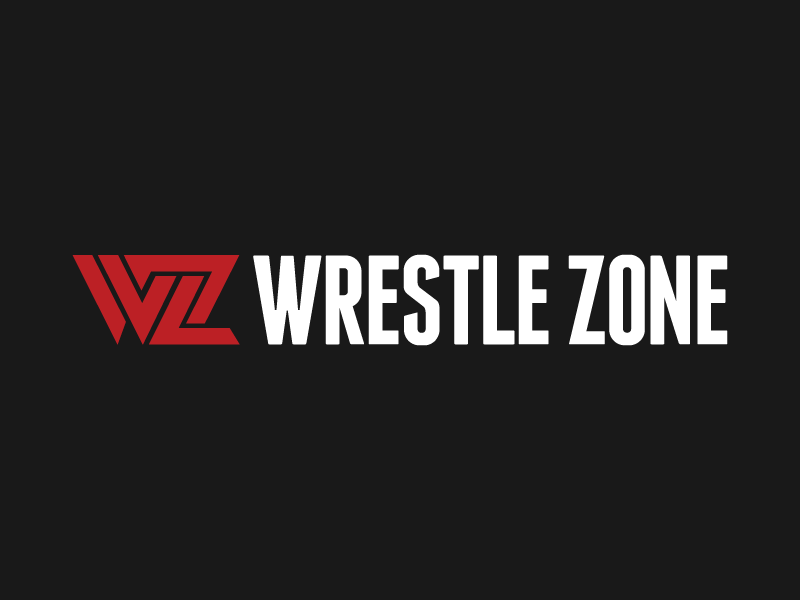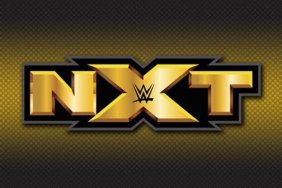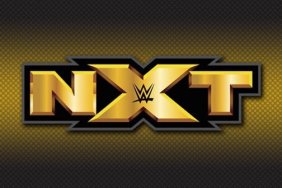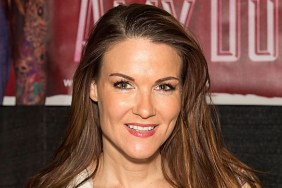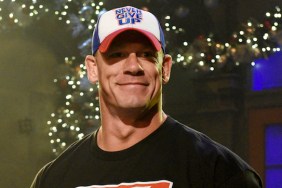At 195cm tall and breaking the scales at just above 115 kilos with a bench press well over 300+lbs, Sam Burgess easily commands attention in cities around China. Having wrestled as an amateur in the UK, training under former commonwealth champion Balvinder Singh, and having dabbled with the UK pro-wrestling scene in the early 2000s after a stint training under World of Sport legend Orig Williams and Basix Pro Wrestling trainer “The Iron Man” Mike Roberts, Burgess was keen to continue his passion of performing in front of live crowds when he moved to China in 2007. Due to the total lack of pro-wrestling as an established form of entertainment in China, Burgess had to wait until 2012 in order to become reacquainted with his former hobby, but his experiences over the past 4 years paint an interesting picture of the market that WWE is now trying to conquer. The following is a transcript of an interview conducted with Sam Burgess, exploring his time wrestling in China.
When in China, I tried talking to people about pro-wrestling and found that some people had seen it but that nobody had ever practiced or done anything with the sport. From 2007 until 2012, nothing happened with pro-wrestling for me in China. It was when I moved to Shenzhen I got to learn about pro-wrestling in China. I attended a comedy night and the comedian on stage made a comment about my size and said something about Hulk Hogan being in the audience and jokingly asked me if I was on break from WrestleMania. I spoke to him after the show and he told me about Hong Kong Wrestling Federation (HKWF).
I did some research and came across a guy called Ho Ho Lun who had the dream of bringing professional wrestling to China. As everyone now knows, Ho Ho participated in the CWC, but back then he was just getting his own federation off the ground. At that time, he had some guys being trained up but for me, travelling from Shenzhen to Hong Kong on a weekly basis was not feasible. I asked Ho Ho if there was anything on the mainland with which I could get involved. Ho Ho told me about a wrestling school in Dongguan and that I should check it out.
I got in contact with the guy running the Chinese pro-wrestling facility (known as CWE – Chinese Wrestling Entertainment); his name is The Slam. He had trained in South Korea and returned to his hometown in Guangdong to pass on his knowledge and experience by starting a wrestling school in 2004. This was during 2013, and I was at my peak, I weighed 118kg and was lifting between 150-170kg on the bench. I had a lot of ring-rust and needed to get used to being in the ring again. We did a lot of shows that were uploaded to China’s most popular video platforms, which eventually led to stories about me in the Shenzhen press.
We decided to introduce storylines and The Slam liked the idea of me being a heel who didn’t talk but instead had a smaller Chinese guy that acted as my mouthpiece. We decided on a name that roughly translated as Aryan Beast. The name didn’t stick though and my character soon became Da Li Sam, which is a play on the Chinese name for Hercules. A reporter for a Shenzhen paper came up with the name and when she used it as part of the title of an article she wrote about my wrestling adventures and it made perfect sense to run with it (http://jb.sznews.com/html/2013-06/25/content_2528112.htm).
In late 2013, The Slam told me about a start-up wrestling company that was investing serious money. This organisation was (unbelievably) called CNWWE and was controlled by a guy called Paul Wang who was known by the foreign talent as “The Drunken Boss”. He promised The Slam, his guys and several foreigner wrestlers the world. He had lived in the US and watched WWE on TV, and he thought he knew the ways of the wrestling world. The CWE and its guys had finally been noticed and were set for the big time in China.
In October 2013, Paul Wang expressed an interest in me relocating to Chongqing in order to join his promotion, and offered me a wage which was 50% less than what I was making with my full time job. I decided not to go. I was heartbroken, but after going to Chongqing for a short trip to meet the guys and take part in a show in a pay-per-appearance agreement, I discovered that I had made a wise choice about not joining full-time as the guy running the organisation was deluded with his vision of opening the Chinese version of WWE.
Wang ultimately ended up holding two shows over the festive season of that year. I came up for the third and fourth show as the demand for big foreign wrestlers was high. I arrived only to learn that the shows had been cancelled. Seeing as I was already there, I joined the others in training. After the training session I alone was invited to dinner by Paul and within 15 minutes he had asked me about me starting up and investing in a trade company.
I mentioned wrestling and his response was muted at best; it seemed as if he didn’t care much for wrestling and was more interested in the work I was doing in Shenzhen, working in a supply chain management company. I immediately knew something was up as he didn’t mention wrestling once throughout the course of dinner. I politely said I would think about it and decided to tell some of the other wrestlers what Paul had said. The guys didn’t really take much notice in my doubts about the fledgling CNWWE. I returned back to work and CNWWE folded not long after that, having only ever put on two shows. Many of the guys working as talent within CNWWE had quit work and moved to Chongqing, both locals and foreigners included. It left a bad taste in everyone’s mouth when it came to wrestling in China.
In 2014, I had to bow out of wrestling for a while after I tore my pec muscle clean off my bone. During my rehab period, I knew that CWE had tried to start up again but this time in a gym in Wuhan. This time around, they managed to record two shows before packing up. The Slam moved back to Dongguan to find a new setup for his ring as well as to recruit new students as many students left after the deal in Chongqing fell through.
Wrestling in China went quiet for several months until CNWWE tried to restart again by teaming up with a trainer from New Taiwan Wrestling (NTW). British wrestler Zach Gibson was even hired to train the Chinese talent. However, after a failed attempt at putting on a show, financial issues and broken promises were all that was left after one month and one show broadcast on the internet.
AI underwent surgery in March 2015 and during my recovery I came across Middle Kingdom Wrestling (MKW). The Slam contacted me randomly in June about an American called Adrian Gomez who lived in the north, in Harbin. This American wanted to start his own wrestling organisation and finally found the motivation and resources to get things rolling by collaborating with CWE.
I was the only white face in the CWE, so he felt I should be involved. As I was recovering I felt limited in what I could do. I knew I had to be part of this and ended up being part of the show that was held in Dongguan that included talent from the UK, US, mainland China, Taiwan and Hong Kong. Due to my inability to work a full match, I suggested that I should be someone’s bodyguard/manager. I was in talks with Adrian Gomez thanks to The Slam and proposed my idea, which Gomez went for. MKW debuted its first show in July with me in a bodyguard role for a Chinese wrestler called Black Mamba and a British wrestler called Voodoo, who I had worked previously with in Chongqing.
Prior to the MKW/CWE collaboration, CNWWE tried for a third time to reanimate its corpse. This time they worked with a hotel to offer nightly entertainment, bringing over several foreign wrestlers including RJM, Voodoo, John Skyler, Zack Gibson as well as a handful of Ho Ho Lun’s HKWF guys. Unfortunately, it was not a case of third time lucky as the boss of CNWWE, Paul Wang, fell ill and was in hospital and couldn’t afford to pay the talent, upsetting the group that operated the hotel in the process. As a result, CNWWE folded once again after only a month.
MKW’s first show had spanned two nights and consisted of an 8 man tournament. The wrestling impressed the crowd and the promotion aimed to gain as much attention as possible by offering free attendance. Another MKW show was arranged for early 2016, and in the meantime I did more wrestling work with The Slam and CWE but was still limited to the role of bodyguard.
I returned to the ring January 2016. The match was a six man tag that featured US and Hong Kong wrestler Ash Silva, two experienced Singaporeans from Singapore Pro Wrestling (SPW) called Andruew Tang and the Eurasian Dragon, and two Chinese wrestlers by the names of Black Mamba and Jason Wang. The match went off without a hitch and the response from the audience was a great tonic after so long on the sidelines.
Earlier this year in May, I was invited to be part of the first live ticketed show of CWF (Chinese Wrestling Federation). The show was held in a nightclub that was very close to the Shanghai sports centre. MKW booker Adrian Gomez had arranged for us to be on the show and also arranged the matches. I was schedule to face American wrestler Dalton Bragg and Chinese wrestler “Selfie King” Hong Wan in a three way match for the title.
CWF’s scheduling was very rushed and the organisers arranged the show in an unorthodox style. We were given no ring time, so some of the moves and actions in the ring were not smooth due to not having a real feel for the environment we were working in. The show was delayed by nearly an hour with no word from the organisers as to when it would start. Furthermore, our theme music and videos played on a loop during the delay, therefore eliminating any element of surprise. Production experience was seemingly lacking for CWF’s biggest show to date though, which also included Ho Ho Lun as well as Hong Kong wrestler Jason Lee, who also recently participated in the WWE’s CWC tournament.
Originally my match was supposed to be one-on-one but was later changed to a triple threat. We were going over our moves outside the ring at which point we were suddenly told a list of things that we could and could not do. Basically, our whole plan went out of the window. We couldn’t abuse the fans, and we couldn’t use weapons. The real nightmare though was when I saw the height of the top rope; it was the same height as my waist. As a result, all of the spots which included me running the ropes were swiftly removed. Ultimately, the match started off good, had a few sloppy parts and ended pretty strong. Afterwards, we received critiques about our work and the organisers of CWF exposed kayfabe to what is presumably an uneducated fanbase by writing an article highlighting all the mistakes in the show so that their fans could read about them.
Big Sam delivers a piledriver to Ash Silva at an MKW event!
A photo posted by WrestleZone (@wrestlezonecom) on
Big Sam stands over the Selfie King alongside Dalton Bragg at a CWF event in Shanghai!
A photo posted by WrestleZone (@wrestlezonecom) on
